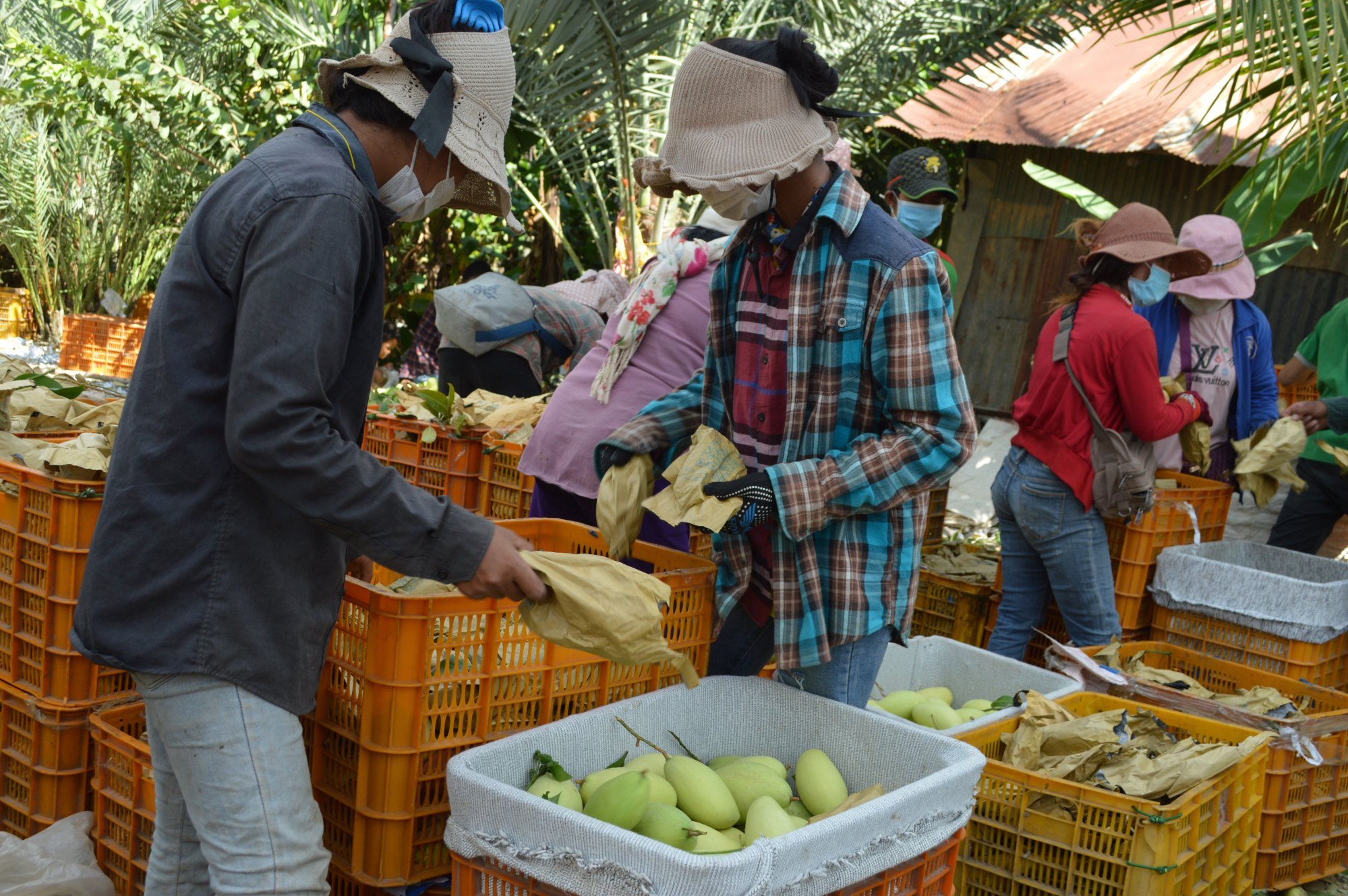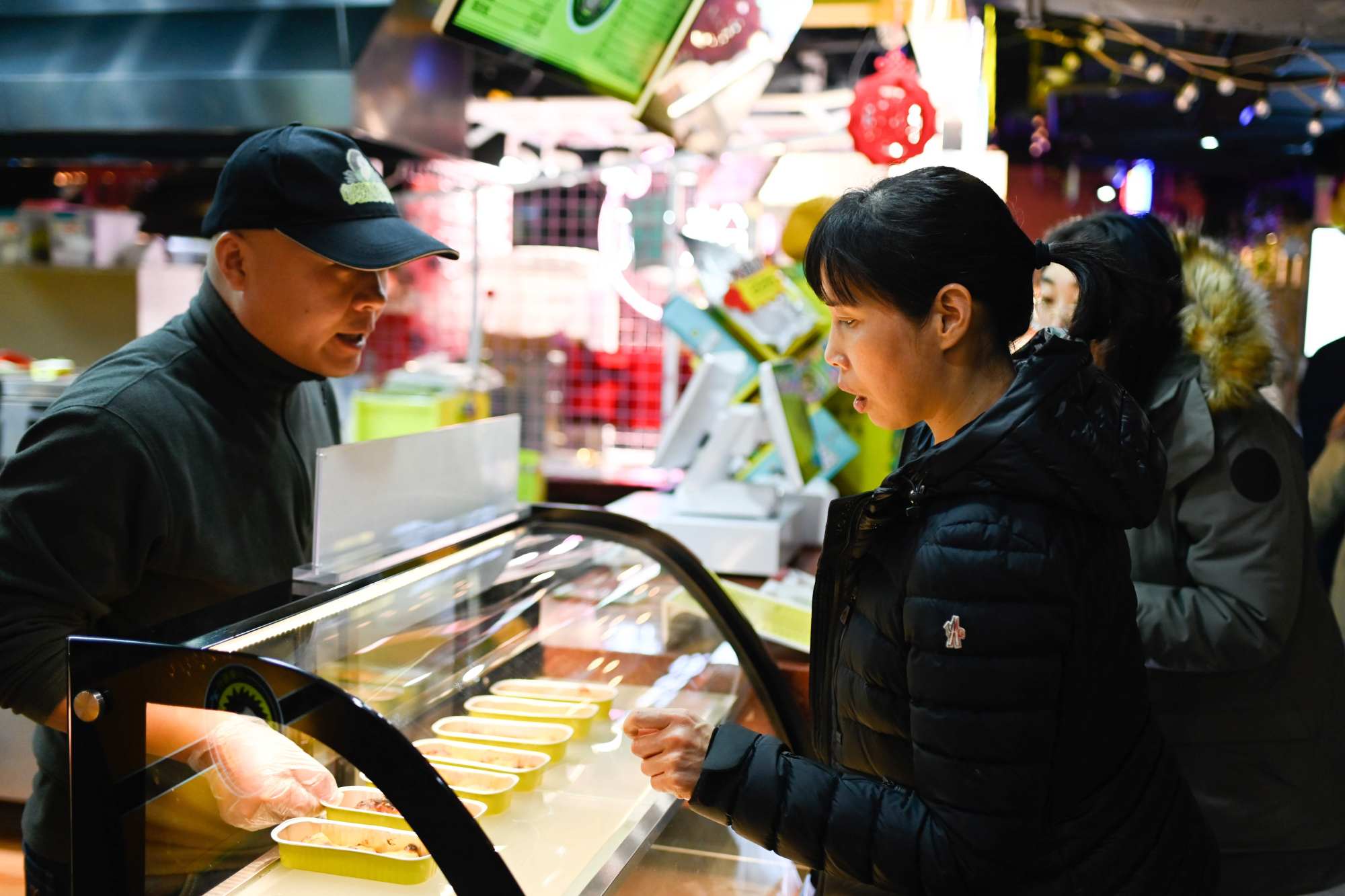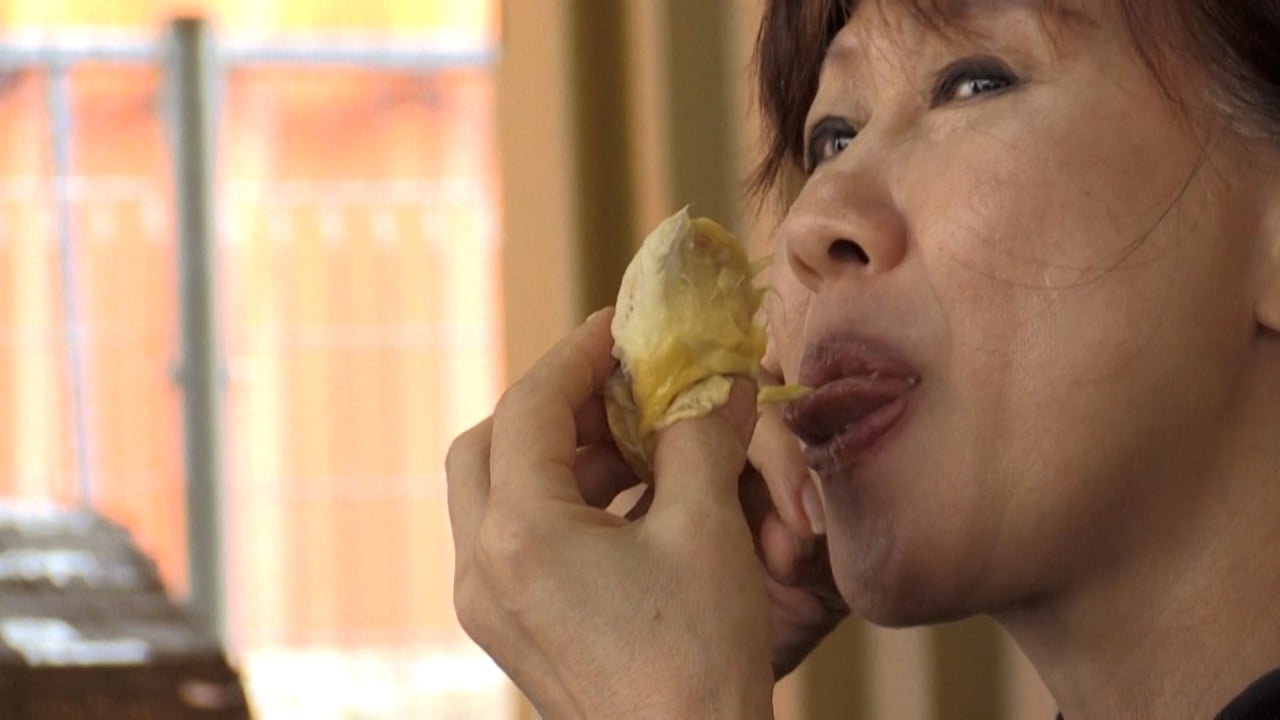
China’s appetite for Cambodian mangoes grows amid surge in demand for imported ‘premium’ fruit
- Cambodian mangoes were once labelled ‘Made in Vietnam’ before being exported to China. Farmers are banking on the China-Cambodia FTA to change this
- China bought US$172.45 billion worth of imported fruits in the first half of 2021, fuelled by a rising middle-class hungry for premium durians and mangosteens
“We’re farmers and we have nothing to do with transportation. But it upset me when Vietnamese traders put a ‘Made in Vietnam’ label on our Cambodian products,” the 43-year-old told This Week in Asia at his farm 90km west of the capital Phnom Penh.
Cambodian producers had traditionally sold their mangoes to Vietnamese traders as part of their bustling land border trade but also because the country lacked export deals, technology and capital investment needed to process and ship fruits directly to big purchasers such as China.
Durian frenzy sweeps Hong Kong as Malaysia’s Musang King takes on Thai imports
Things are changing since Beijing and Phnom Penh signed a deal last June allowing exporters to tap into a billion-dollar market fuelled by consumers hungry for Asian produce. In April, China certified 37 Cambodian mango plantations and five packaging factories as compliant.
The newly-ratified China-Cambodia free-trade agreement – which comes into effect on Saturday – is expected to boost Cambodian exports by reducing tariffs on nearly all goods, including mangoes, to zero.
Cambodian mangoes are known for their sweetness and one of its more popular varieties – Keo Romeat – is sold to Vietnam and also Thailand, where it is also re-exported. Ultimately, these mangoes all end up in China, Chamm said.
“Vietnam traders signed agreements with China, saying they have 500 hectares of mango farmland to supply to the Chinese market. But in actual fact, their farms are only 5 hectares so most of the mangoes came from farms in Cambodia,” he said.

The previous “flawed system” meant Cambodian farmers could not capture significant value from their crops, as they had no direct access to international markets, according to an online project brief by Singapore investment company InfraCo Asia.
The firm, a project developer for sustainable projects in Asia, assisted in building a new mango processing plant to help 772 farmers in the Kampong Speu area in 2018.
Mango mania
China’s annual imports of mangoes – both fresh and processed – have steadily increased over the years, with a five-fold spike between 2019 and 2020.
Last year, China imported 84,000 tonnes of mangoes, with 80 per cent of these fruits coming from Vietnam, the Food and Agriculture Organization of the United Nations (FAO) said in a 2020 market review.
The import volume this year, however, declined to just over 10,000 tonnes between January and November, as the Covid-19 pandemic continued to wreak havoc on supply chains and slowed demand.
Booming Vietnam beat Covid-19, but can it face up to China?
Mango importers said Cambodia’s trade deal with China would not guarantee a rise in fortunes for the Southeast Asian country’s farmers overnight.
A Hong Kong mango importer, who has been buying Cambodian mangoes for a number of years, said the “grey market” for mangoes at the border of Cambodia and China in Guangxi province would undermine both the price and amount of mangoes that China purchased.
“In Guangxi, they have very big fruit “cities” like wholesale centres selling “no-report” and “no-customs cleared” fruits from Vietnam,” said the trader, who declined to be named.
The same fruits in Guangxi would also be distributed across China by road, he added.

Indeed, Chamm said Chinese traders did not seem eager to try to outprice their Vietnamese counterparts by buying directly from Cambodian farmers.
“They offer 1,300 Cambodian riel (US$0.32) per kilogram. We can’t make a profit with this price.
“When the Vietnamese or Thai traders offer us a higher price, then the Chinese traders start competing at 1,900 riel a kilo when they know I agreed on 1,750 riel a kg with Vietnamese traders.”
He said he hoped for more government funding and support on how to sell directly to China.
Another farmer, 52-year-old Lach Leab, who has about 40 hectares of mango trees, said he had a bad experience in his commercial dealings with a Chinese buyer who paid him 30 per cent of the agreed price of 2,000 riel (US$0.49) per kilogram but did not stump up the rest.
“They said they could not bring the cash on time … [but] they put the mangoes on the truck, then all of them were gone. I didn’t get anything more than the 30 per cent deposit.”
Despite being burnt once, Leab said he would do a deal with Chinese buyers again but only if they offered better terms such as fairer prices or a multi-year supply contract.
Demand for tropical fruits has been very high from China for the last several years because they typically do not have good substitutes
Favourable terms are important as costs associated with production including fertiliser are rising, Chamm pointed out. It is well-known in the industry that operational expenses form a higher percentage of a producer’s outlay than tariffs.
The Hong Kong importer said it would not make sense for new farmer-exporters in Cambodia to lower their prices just to get into the Chinese market. Growers seeking direct sales would need to navigate the challenge of leasing expensive containers to transport mangoes across different rivers to the key Cambodian port of Sihanoukville in the southwest, where the fruit would be transferred to ships bound for big cities on China’s coast.
“Many river containers don’t have air-conditioning and you need electricity at the port to store the mangoes before they are delivered to the vessel. So they are not ready in Cambodia,” he said.
Limited marketing by the Cambodian government also meant the country’s mangoes would remain a cheap and mass-volume produce that would not attain the “premium” status of fruits from the likes of Australia, Japan or South Korea making it a hard slog for Cambodian exporters, he added.
Thailand’s durian dealers fear Covid-19 surge could derail exports to China
Fruity business
China’s appetite for mangoes is a reflection of its burgeoning demand for imported fruits from across Asia. Agricultural sourcing platform Tridge said the world’s second-largest economy bought US$172.45 billion worth of fruits from overseas in the first six months of 2021 – a rise of 26 per cent compared to the previous year.
This was likely to increase further next year, Tridge said.
Still, Thai professional services consultants Mahanakorn Partners Group said the bilateral FTA had also affected the kingdom’s smaller farmers growing garlic, longans and other fresh produce due to cheaper Chinese alternatives flooding the market.

Demand had exploded in big cities like Shanghai and Beijing, Tridge said.
The wealthy middle-class, especially those with big disposable incomes, regard these fruits as unique and therefore premium items.
“Demand for tropical fruits has been very high from China for the last several years because they typically do not have good substitutes.
“For example, durian has no substitutes in China; other popular tropical fruits like mangosteens are sold as alternative products,” Tridge market analyst Jinwoo Cheon said.
“We see this phenomenon happening not only in China but also in Korea and Japan, as incomes rise”.
6 in 10 Greater Bay Area firms plan to boost Asean investments
China was the second-largest global importer of mangoes, mangosteens and guavas after the US, buying around 380,000 tonnes in total in 2020.
In a 2019 report, the Beijing-based EU SME Centre highlighted to exporters that wealthy Chinese consumers were eager to try new products.
“This middle-class is gradually moving towards a more westernised lifestyle, including a higher demand for healthy products.”
Online orders for fresh and healthy foods had soared during the pandemic, although this was affected by slower deliveries and supplies amid disrupted supply chains caused by lockdowns, consultancy firm McKinsey said in its China consumer report this year.
Yet movement restrictions and further supply chain chaos due to the persistence of Covid-19 and the new Omicron variant could thwart exports. Earlier this month, about 4,000 container trucks carrying a variety of food products from Vietnam were stuck at the land border with China due to stricter inspections.
Sithanonxay Suvannaphakdy, lead researcher at the Asean Studies Centre at the Singapore-based think tank Iseas-Yusof Ishak Institute, said FTAs had helped boost Asean’s fruit exports to China. These increased by 117 per cent each year over the past decade, reaching US$6.49 billion in 2019, she said.
“In 2019, Asean’s exports of fruits to China were greater than its imports, resulting in a trade surplus of US$4.62 billion,” Suvannaphakdy said.
“This suggests that the large market size of China presents an opportunity for Asean countries to boost their production and export to China.”
The researcher said the Asean-China FTA – which came into force in 2003 and was fully implemented last year – had been especially helpful as it had a higher level of “tariff liberalisation” than other bilateral deals.
To help Asean farmers, there should be more progress in streamlining requirements on sanitary standards and removing red tape by Asean governments and their counterparts in China, she added.


